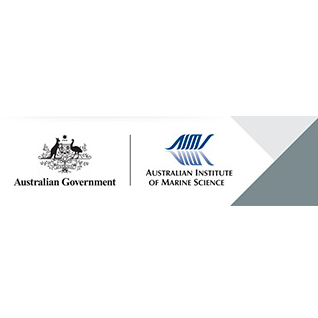Brief description
Mature male mud crabs were collected by commercial fishers from 11 rivers and creeks spanning 1500 km of the Queensland coast, following the 2004/2005 and 2005/2006 wet seasons. The sites, sampled between March and July, were located at the mouths of the Normanby River, Barron River, Johnstone River, Tully River, Herbert River Gordon Creek, Burdekin River, Pioneer River (post 2005/2006 wet season only), O'Connell River, Fitzroy River and Burnett River.On arrival at the laboratory, the live crabs were placed in a seawater/ice slurry. Each crab was weighed, the carapace width was measured and urine and hemolymph samples taken. Hepatopancreas, muscle and gill samples were collected. Most of the hepatopancreas was frozen at -20°C. Sub-samples of hepatopancreas, muscle gill, urine and hemolymph were also snap frozen in liquid nitrogen and stored at AIMS at -80°C for future bioindicator assays.The hepatopancreas from each of 12 crabs from each site was subsampled and pooled to form four hepatopancreas samples (each sample derived from three individual crabs). These samples were extracted and analysed for pesticides and persistent organic pollutants (POPs). Individuals from the pooled samples were further analysed when contaminants were detected in the pooled samples. Analyses, were conducted for organochlorine pesticides (OC), organophosphate pesticides, polychlorinated byphenyls (PCBs) as selected congeners and polyaromatic hydrocarbons (PAHs). Pesticide analyses were carried out by Queensland Health and Scientific Services (QHSS).A freeze dried subsample of the hepatopancreas from 12 replicate crabs from each site was digested using HNO3/HClO4 and analysed for metals and metalloid concentrations (total Ca, Mg, Cu, Fe, Sr, Zn, Mn, Cd, Be, Co, Ni, Ba, Mo, Al, Cr, Pb, Sn, V and Se) using a Varian Liberty 220 inductively coupled plasma-atomic emission spectrometer (ICP-AES). Arsenic (As) was analysed on the Liberty 220 ICP-AES by hydride generation and mercury (Hg) by cold vapour generation. This research was undertaken to gather baseline data on the concentrations of pesticides, PCBs, PAHs, metals and metalloids present in the mud crab, Scylla serrata, from the estuaries of rivers and creeks that flow into the GBR lagoon. This species was chosen as it has shown potential as a biomonitoring species due to its capacity to bioaccumulate a range of contaminants. In addition, this is an important food species, targeted by subsistence, recreational and commercial fishers. This research was undertaken as a component of "The Reef Water Quality Protection Plan Marine Monitoring Program", which was developed and run by the Great Barrier Reef Marine Park Authority on behalf of a consortium of research partners, including the Australian Institute of Marine Science, and funded by the Natural Heritage Trust.Lineage
Maintenance and Update Frequency: notPlannedNotes
CreditNegri, Andrew P, Dr (Principal Investigator)
Modified: 23 06 2025
text: westlimit=145.767; southlimit=-16.867; eastlimit=145.767; northlimit=-16.867
text: westlimit=147.604; southlimit=-19.679; eastlimit=147.604; northlimit=-19.679
text: westlimit=152.401; southlimit=-24.753; eastlimit=152.401; northlimit=-24.753
text: westlimit=150.876; southlimit=-23.536; eastlimit=150.876; northlimit=-23.536
text: westlimit=146.833; southlimit=-19.283; eastlimit=146.833; northlimit=-19.283
text: westlimit=146.3; southlimit=-18.533; eastlimit=146.3; northlimit=-18.533
text: westlimit=146.067; southlimit=-17.517; eastlimit=146.067; northlimit=-17.517
text: westlimit=144.133; southlimit=-14.417; eastlimit=144.133; northlimit=-14.417
text: westlimit=148.667; southlimit=-20.567; eastlimit=148.667; northlimit=-20.567
text: westlimit=149.217; southlimit=-21.148; eastlimit=149.217; northlimit=-21.148
text: westlimit=146.053; southlimit=-18.028; eastlimit=146.053; northlimit=-18.028
Persistent organochlorines and metals in estuarine mud crabs of the Great Barrier Reef: Negri AP, Mortimer M, Carter S and Mueller JF (2009) Persistent organochlorines and metals in estuarine mud crabs of the Great Barrier Reef. Marine Pollution Bulletin 58: 765-786.
local : articleId=7893
Mud crab bioaccumulation monitoring. IN: Schaffelke B and Waterhouse J (eds) Water quality and ecosystem monitoring programs - Reef Water Quality Protection Plan: Negri AP, Mortimer M and Muller J (2006) Mud crab bioaccumulation monitoring. IN: Schaffelke B and Waterhouse J (eds) Water quality and ecosystem monitoring programs - Reef Water Quality Protection Plan.
local : articleId=7504
Bioaccumulation monitoring: mud crabs. (pp. 106-115). In: Schaffelke B, Furnas MJ and Waterhouse J (eds) Report on status and trends of water quality and ecosystem health in the Great Barrier Reef World Heritage area: September 2005: Mortimer M and Negri AP (2005) Bioaccumulation monitoring: mud crabs. (pp. 106-115). In: Schaffelke B, Furnas MJ and Waterhouse J (eds) Report on status and trends of water quality and ecosystem health in the Great Barrier Reef World Heritage area: September 2005. Great Barrier Reef Marine Park Authority & CRC Reef Research. 162 p.
local : articleId=7477
- global : 7b9675c4-5d3c-4a21-9f10-6b8fb8f595d9


